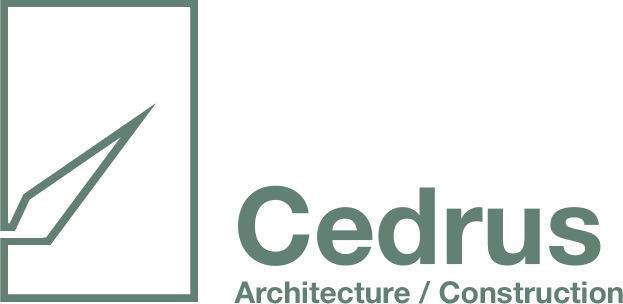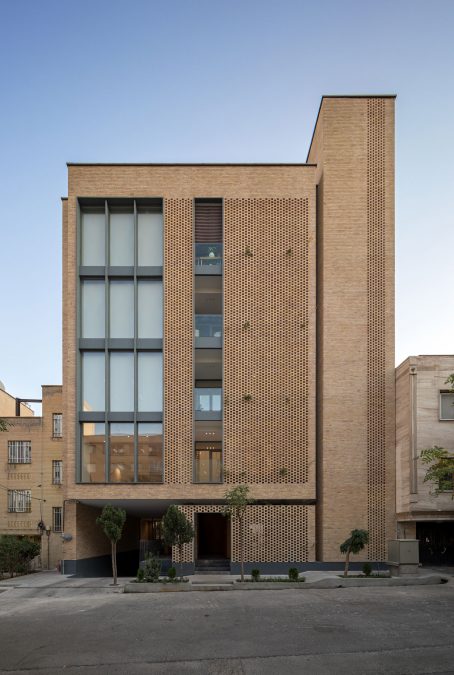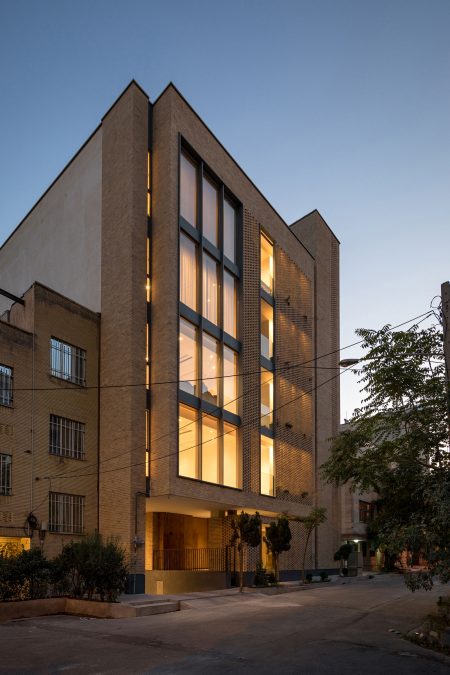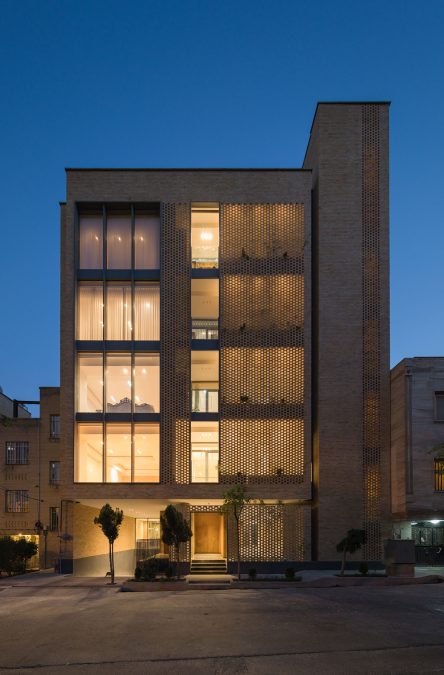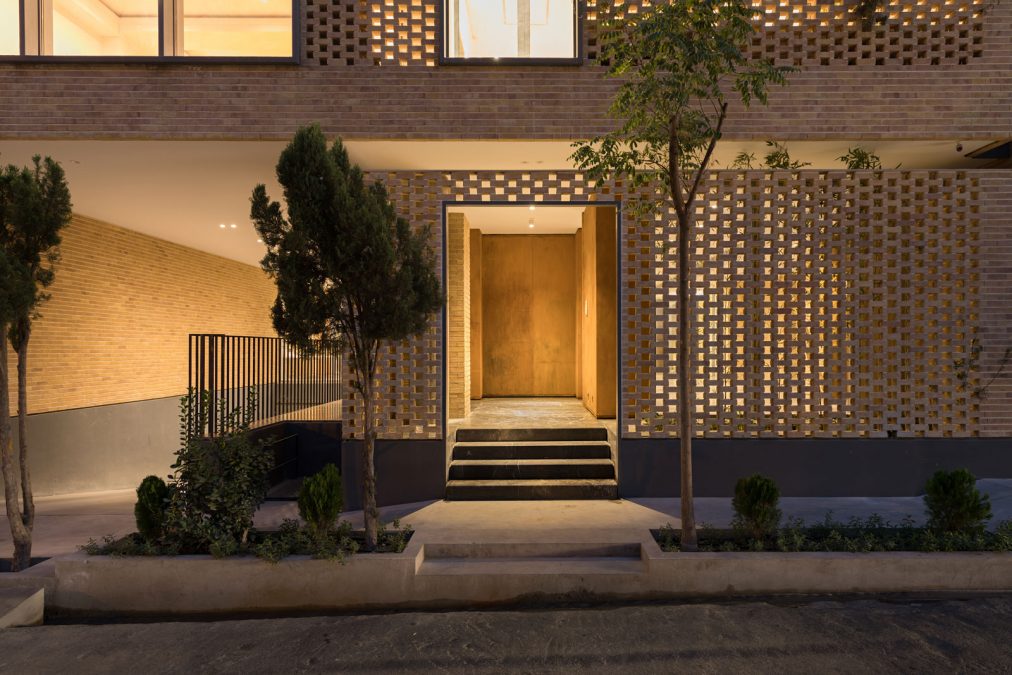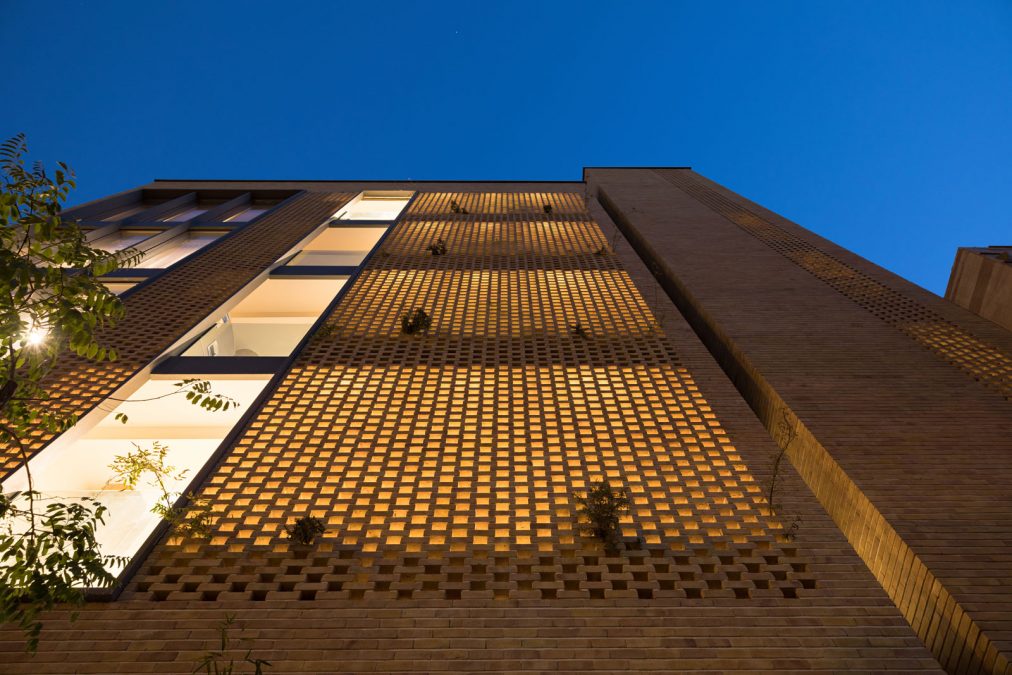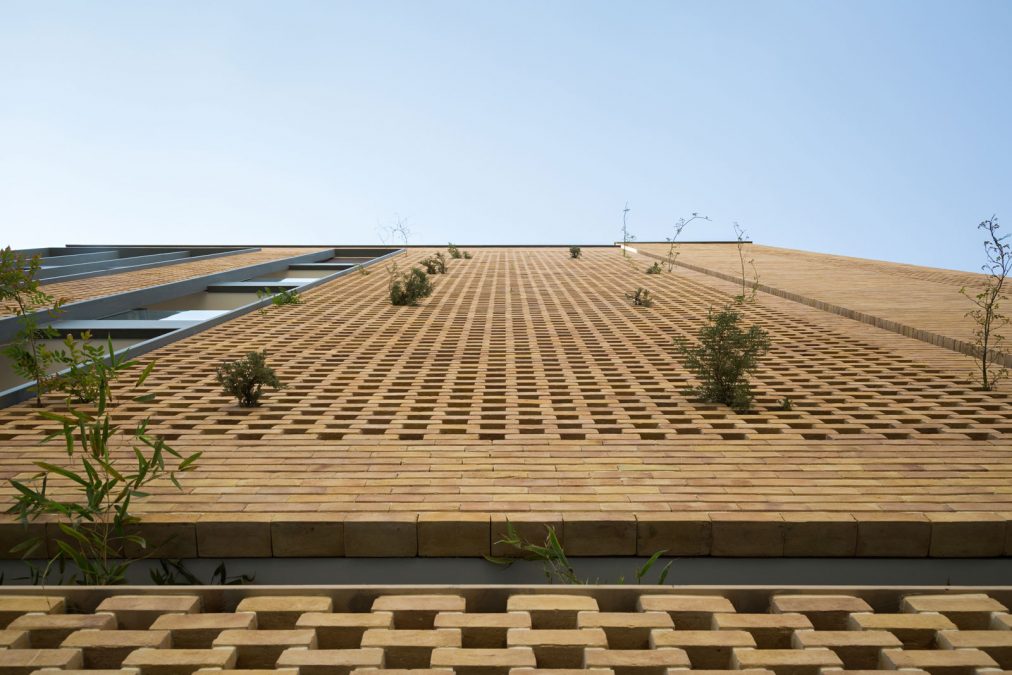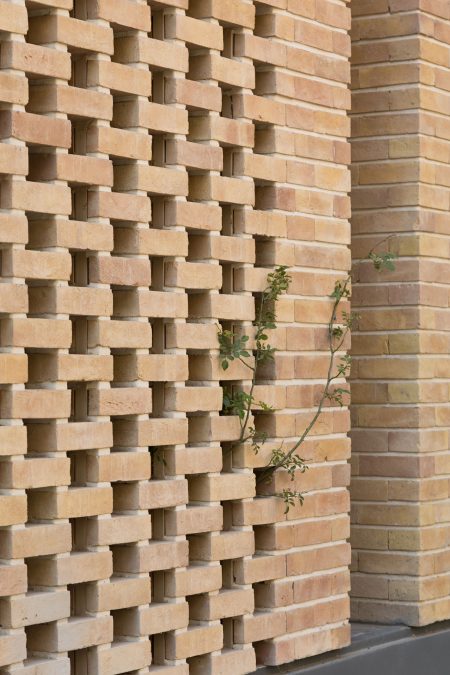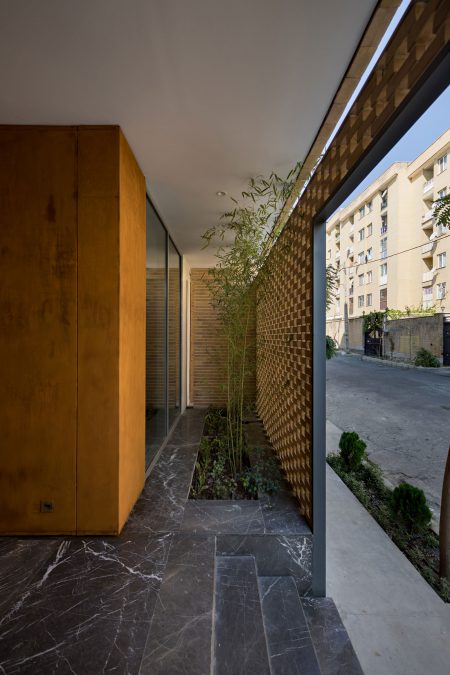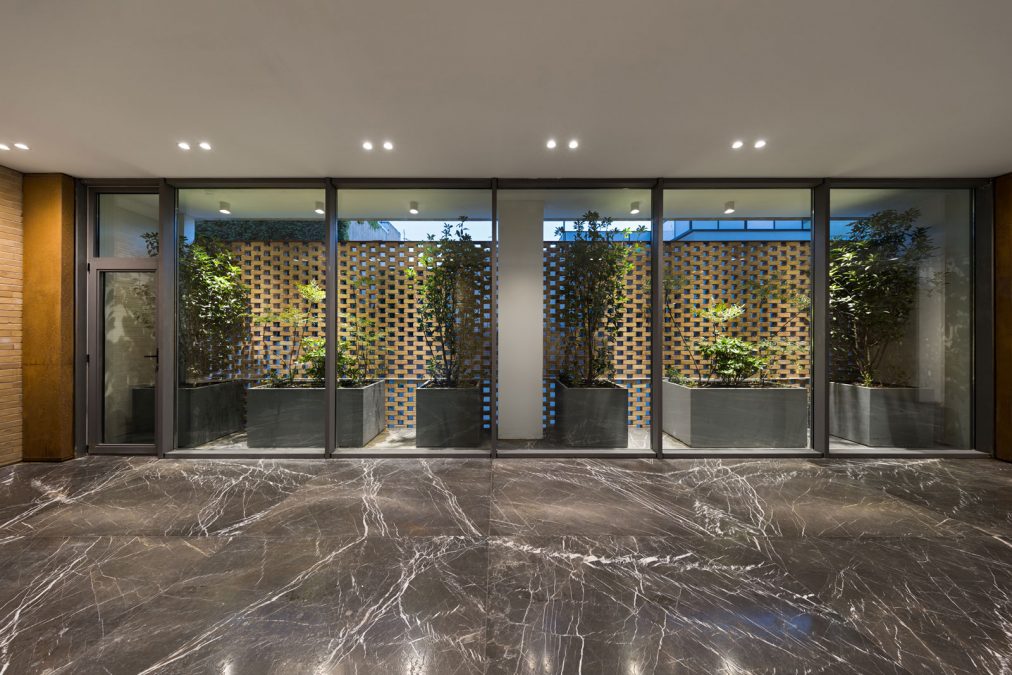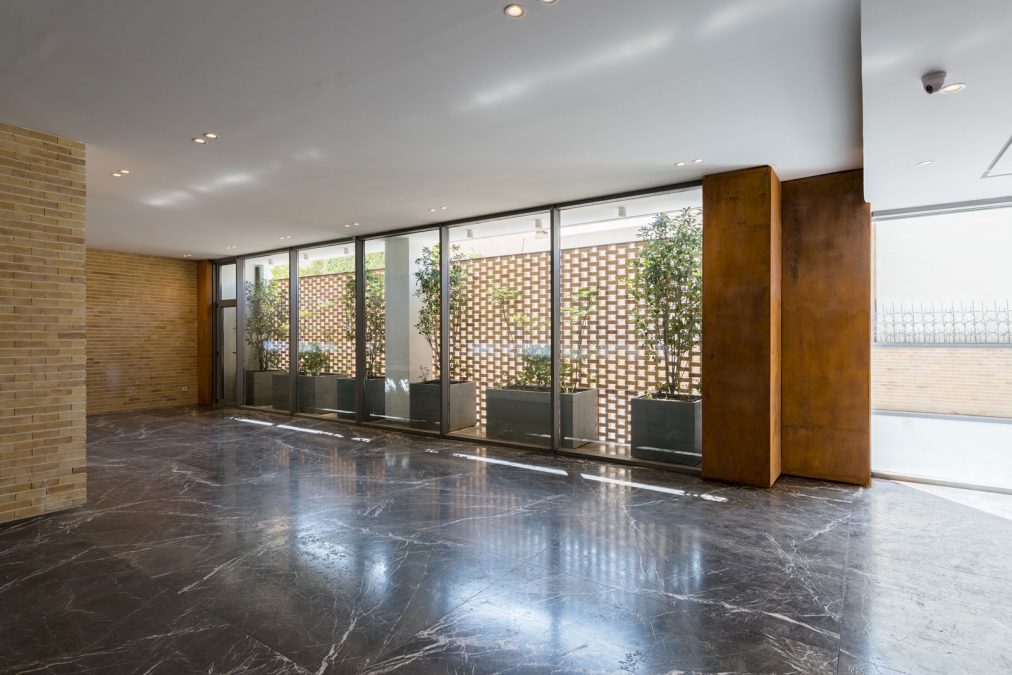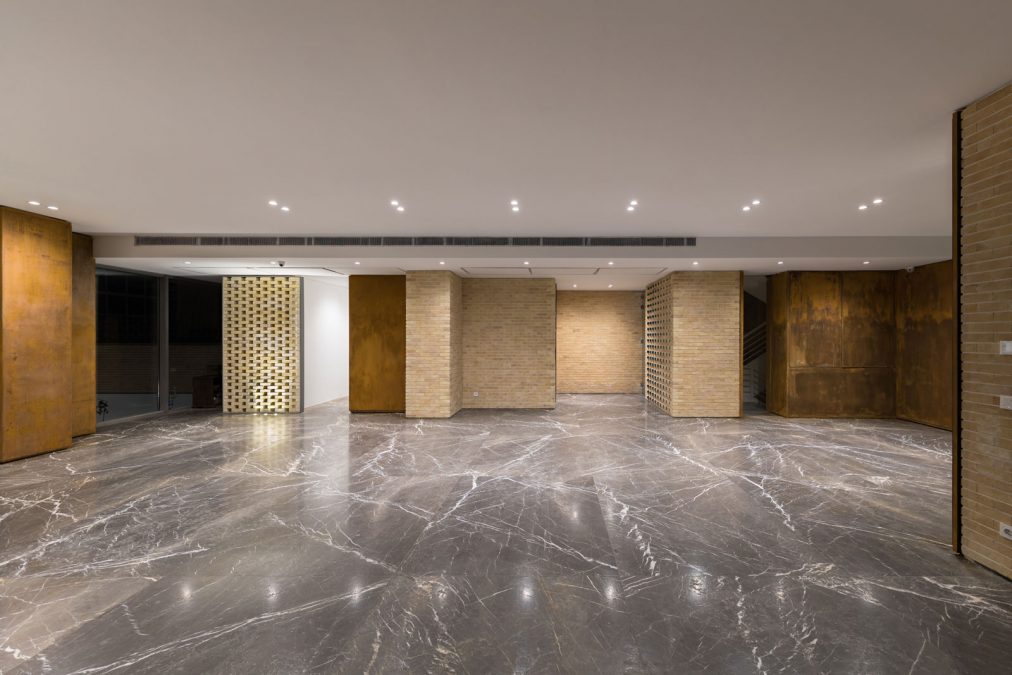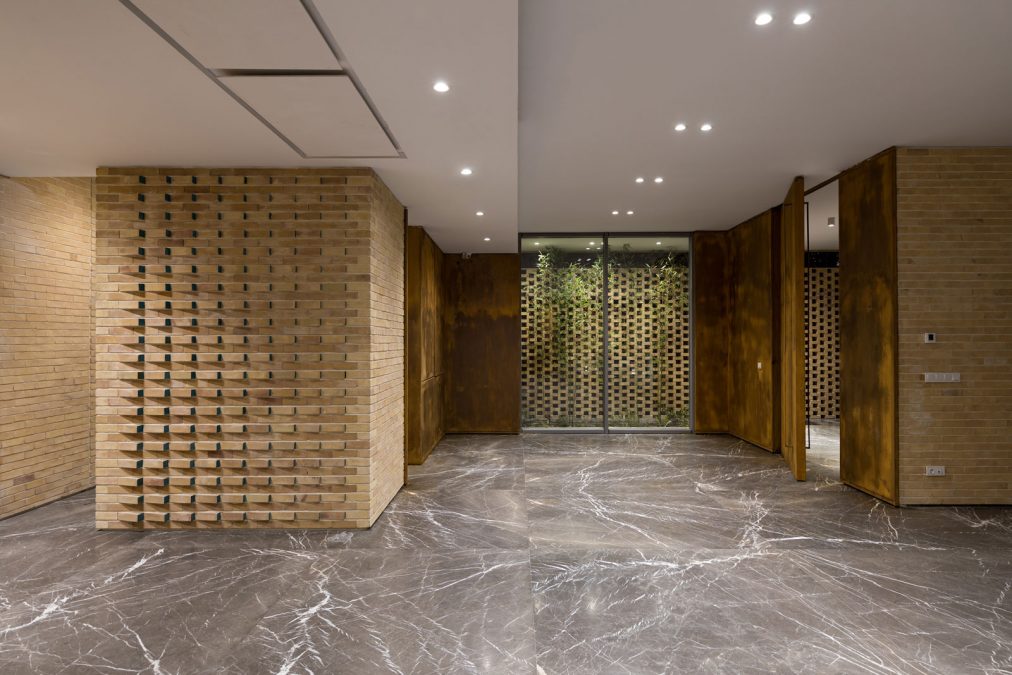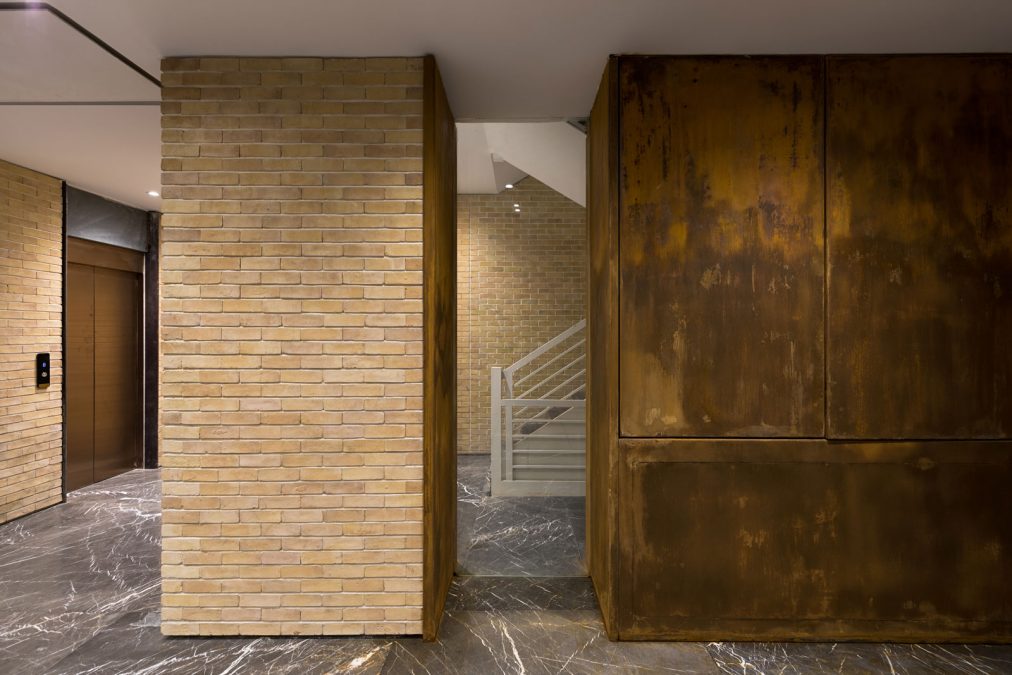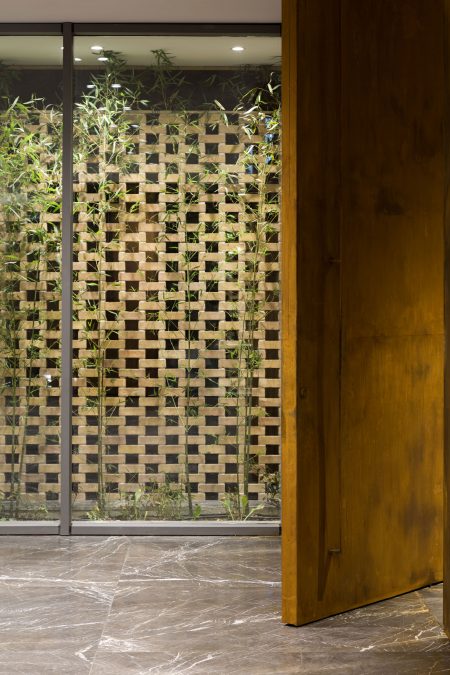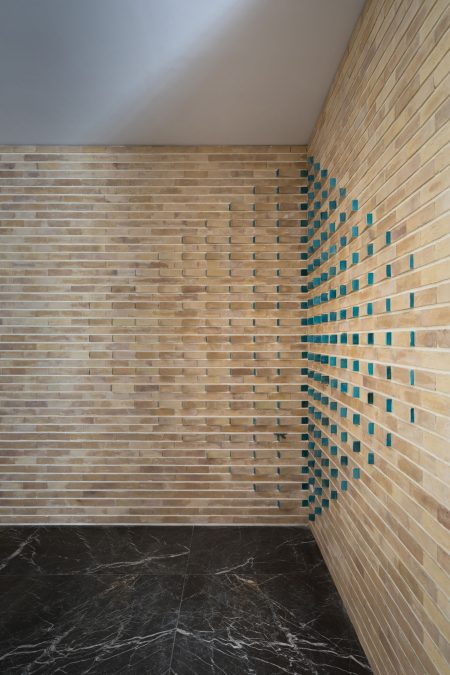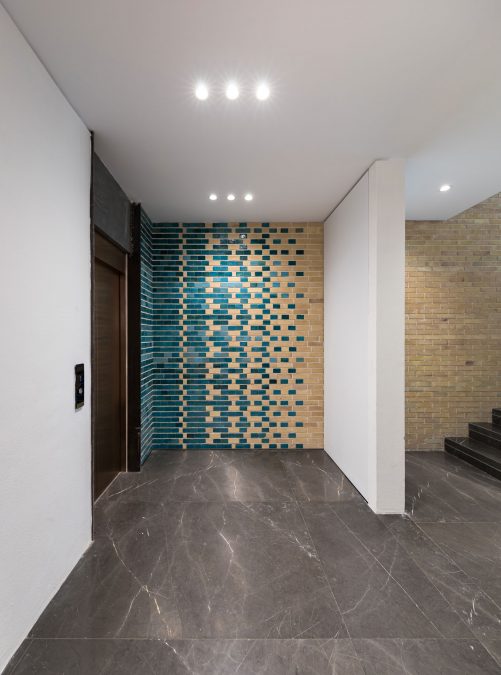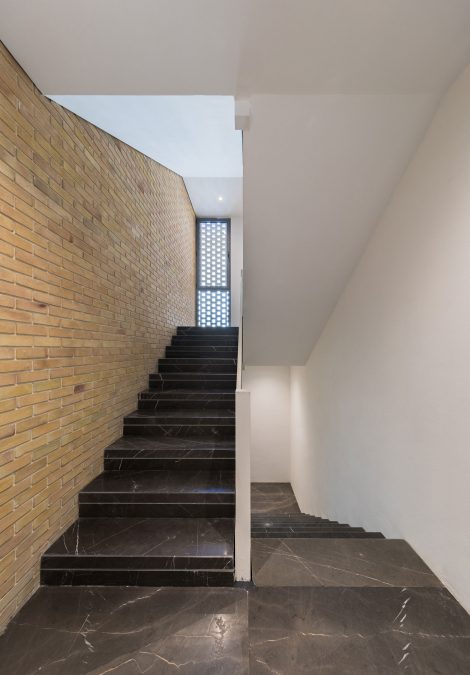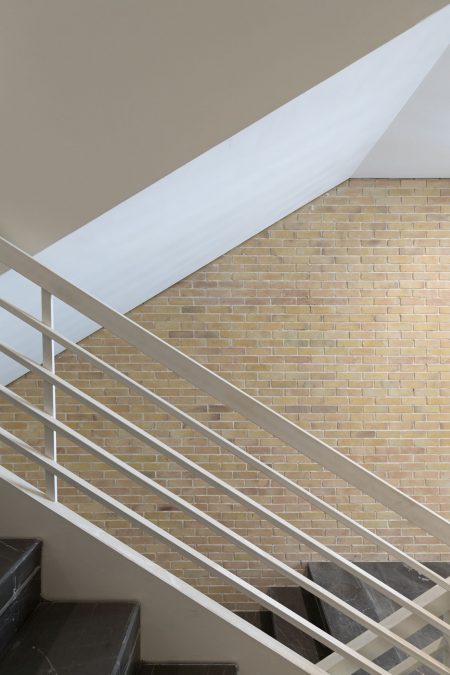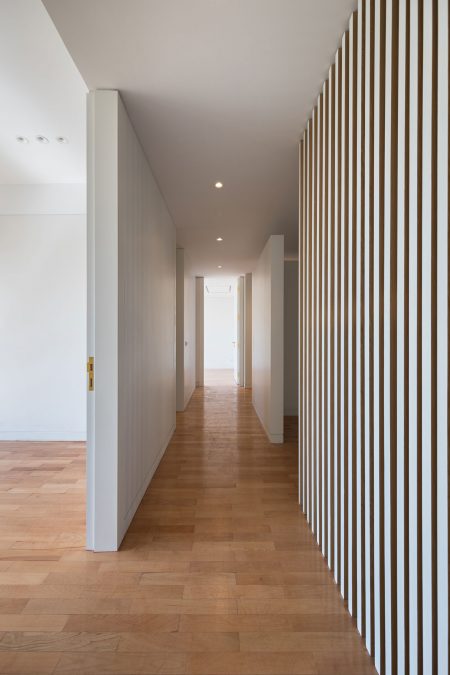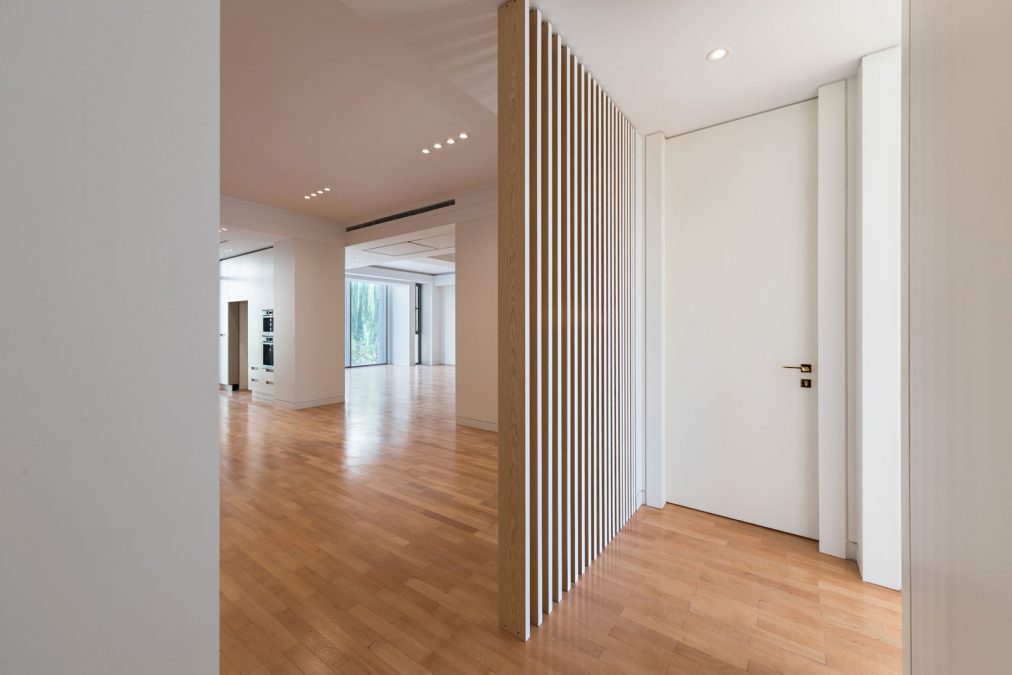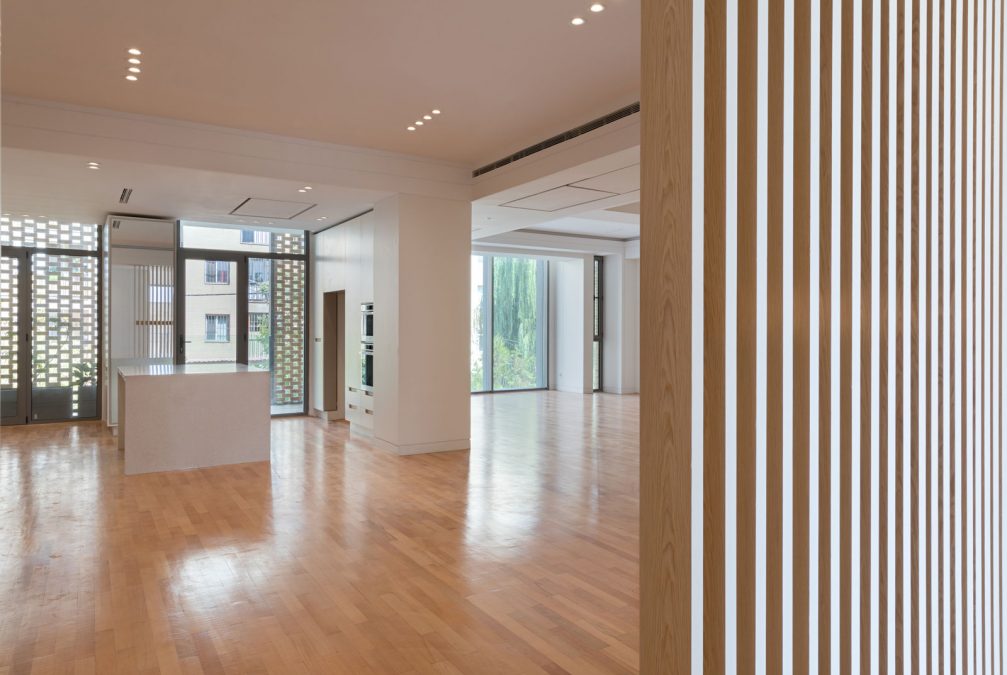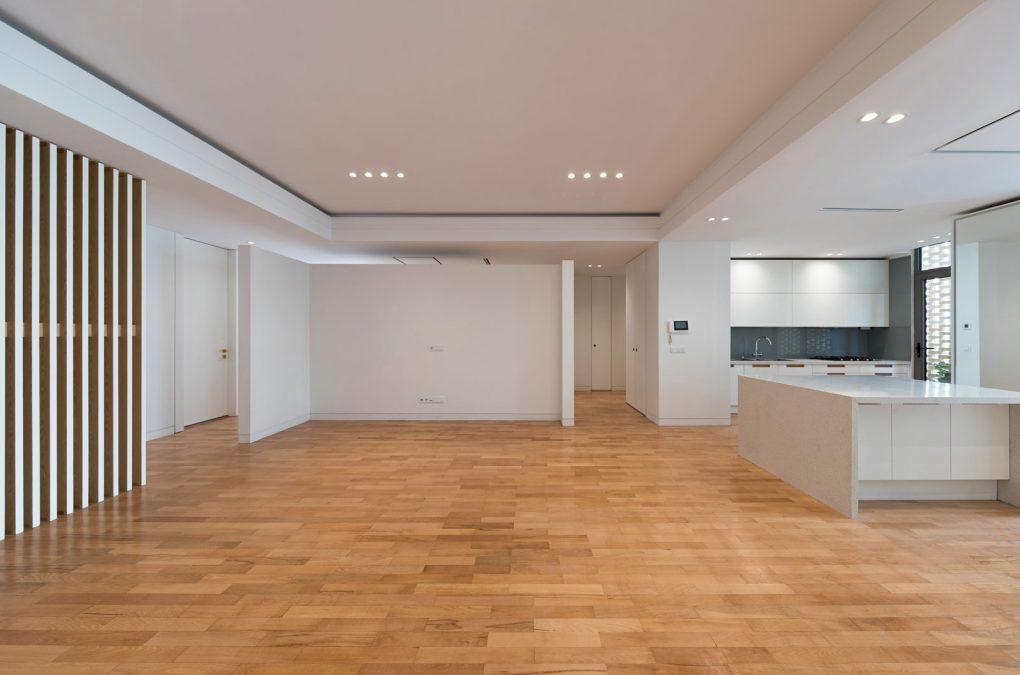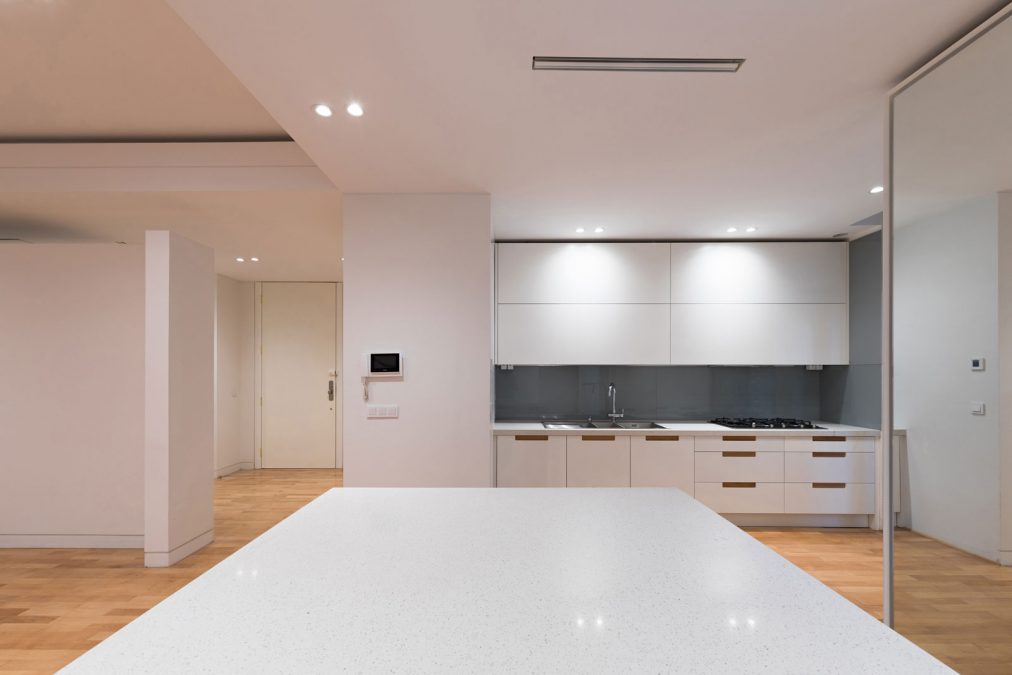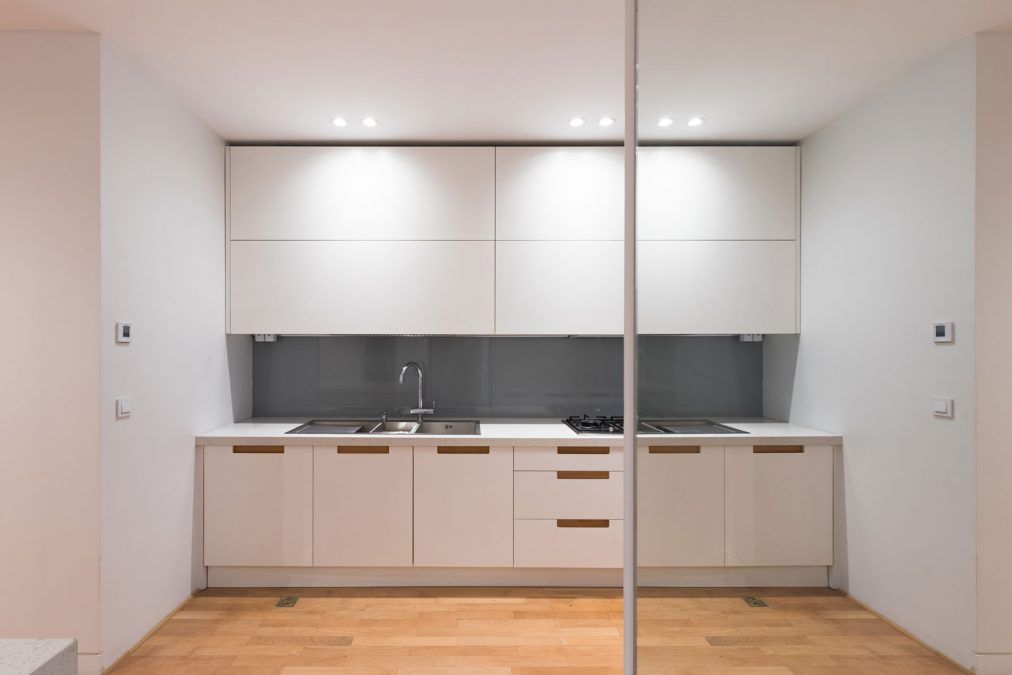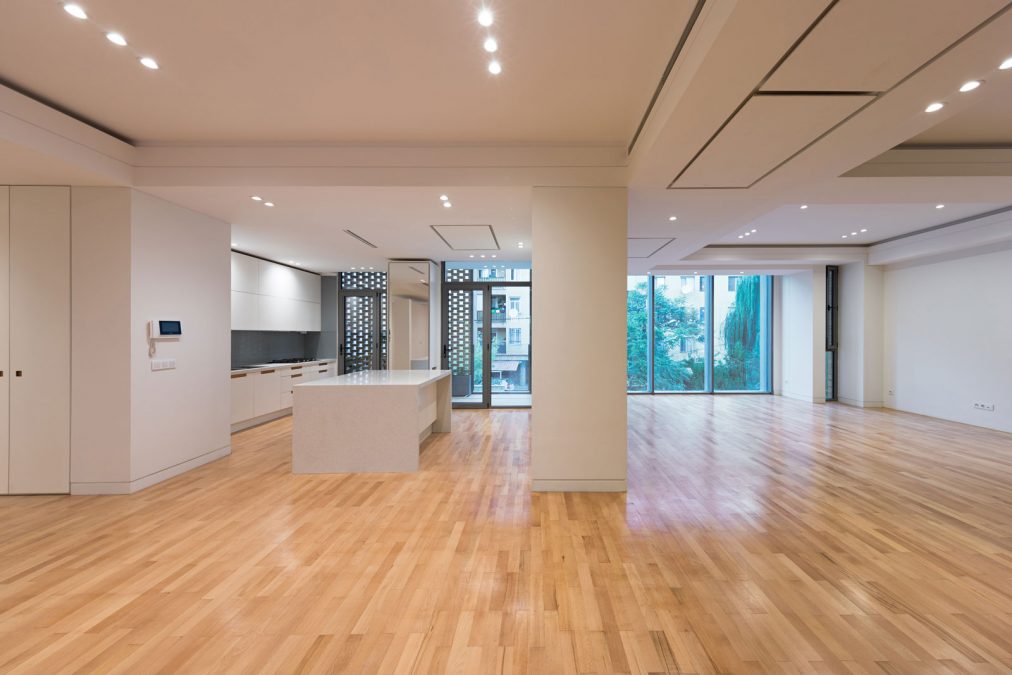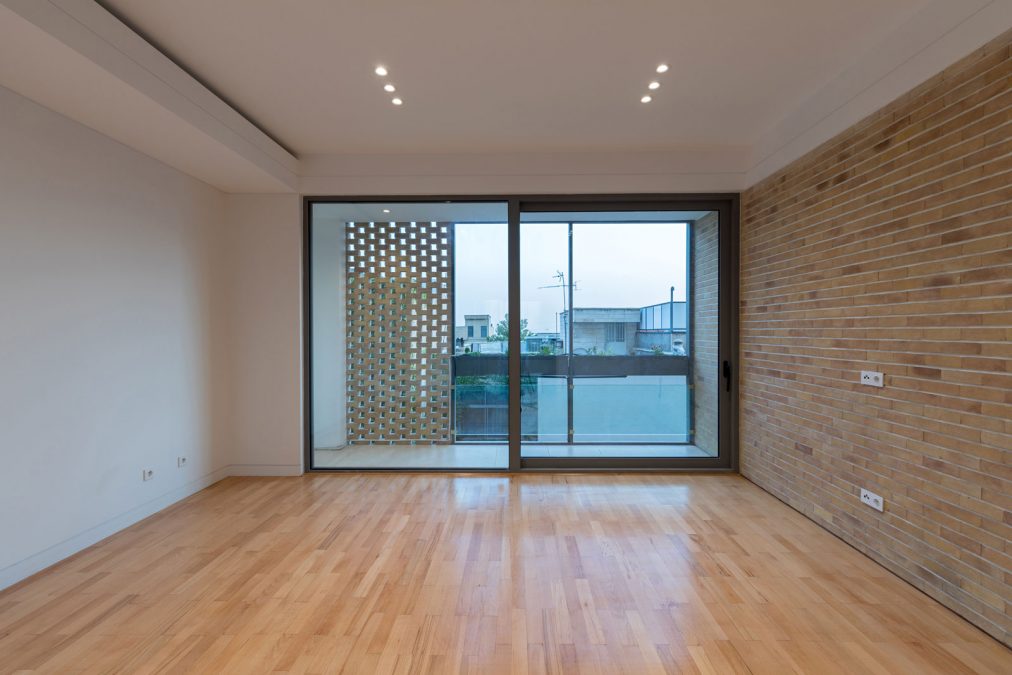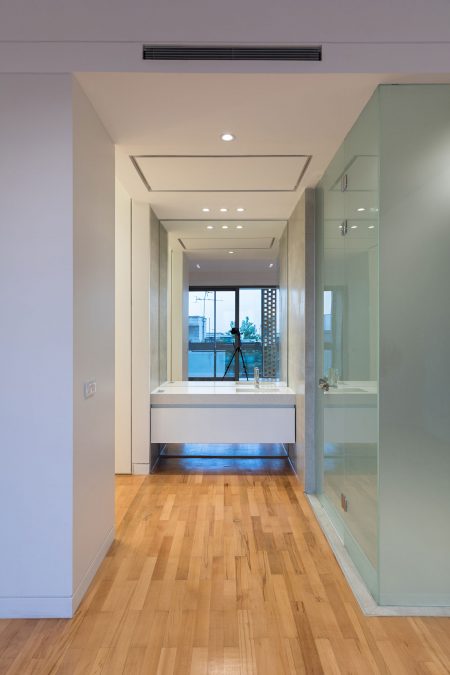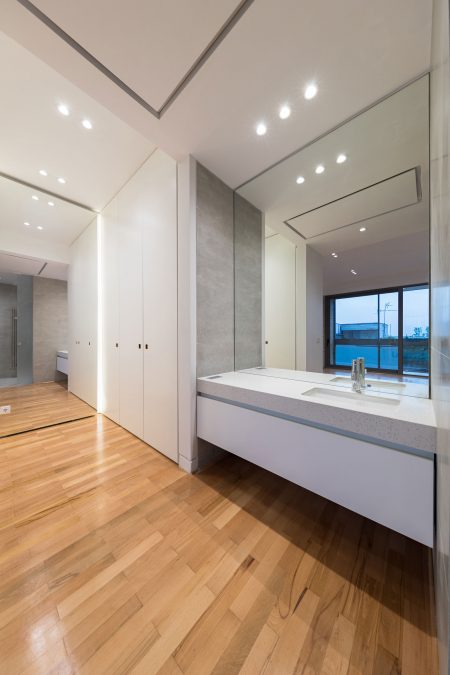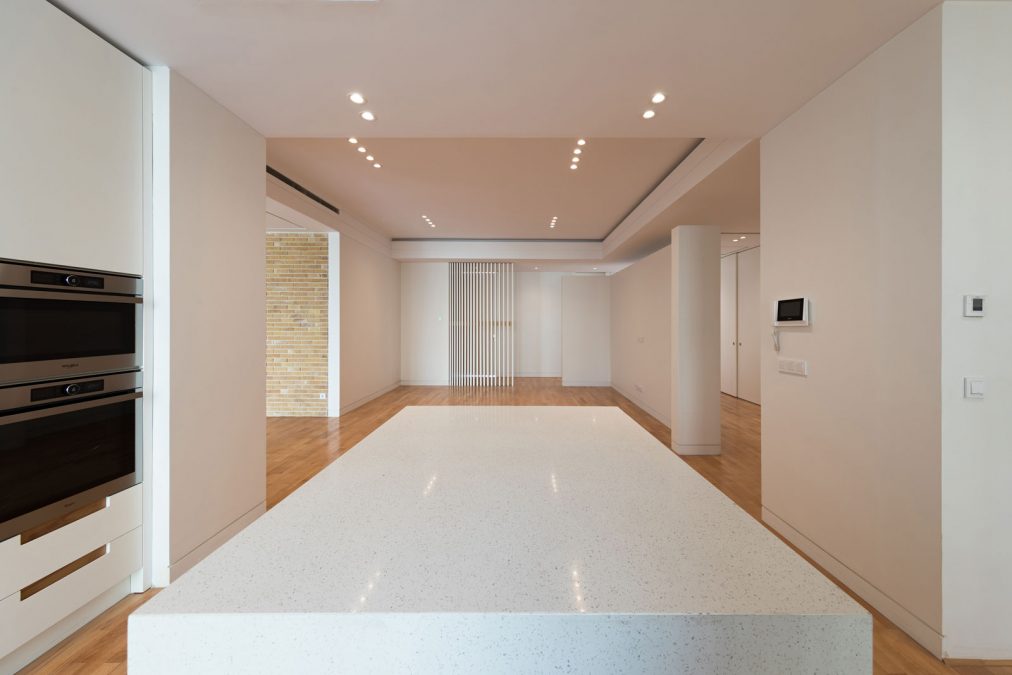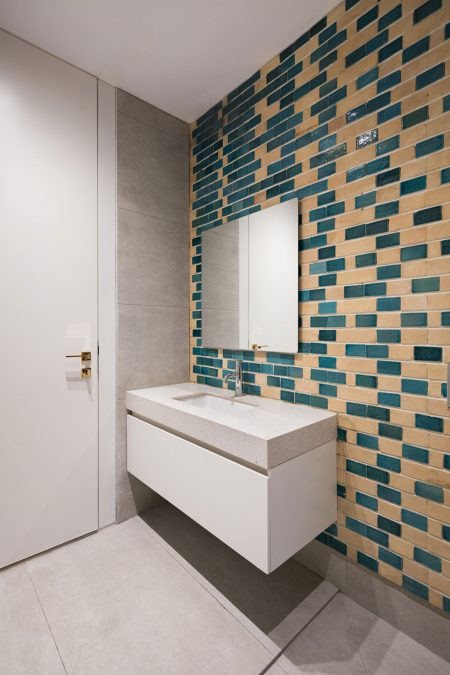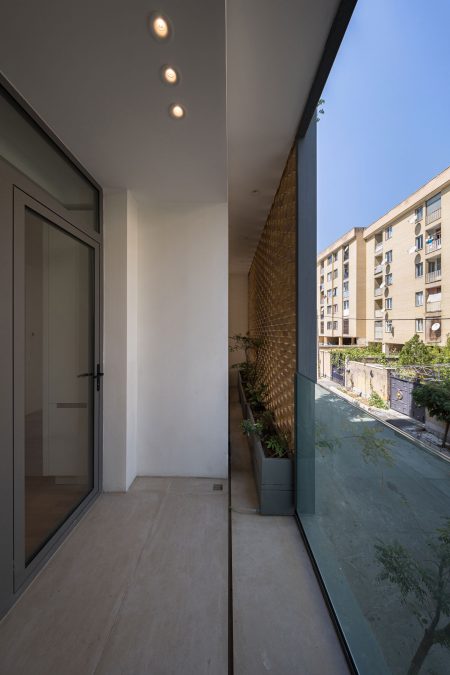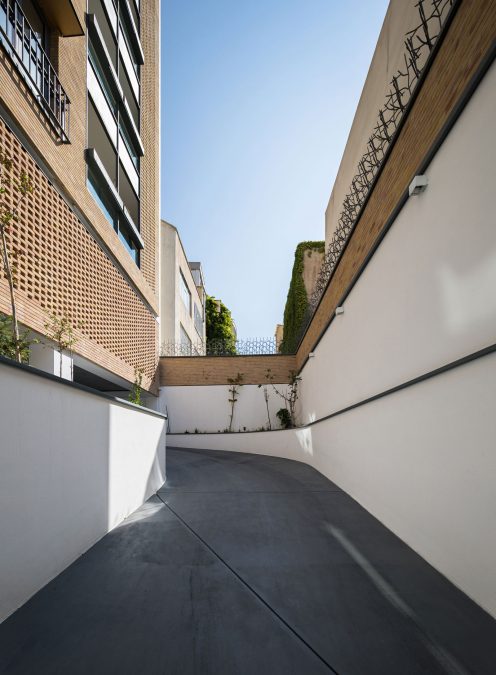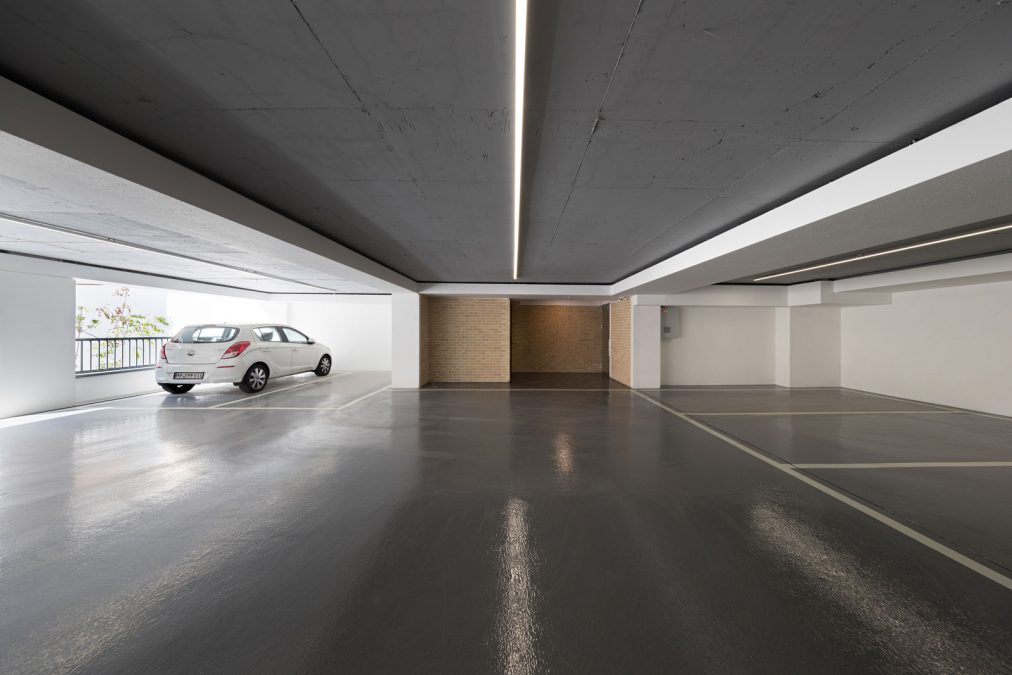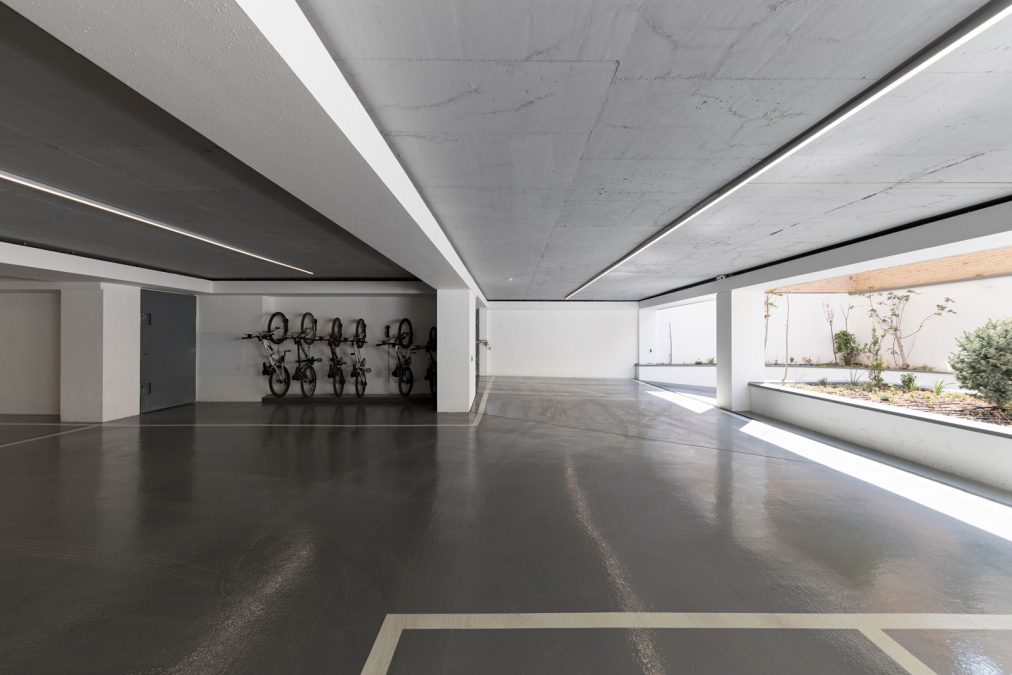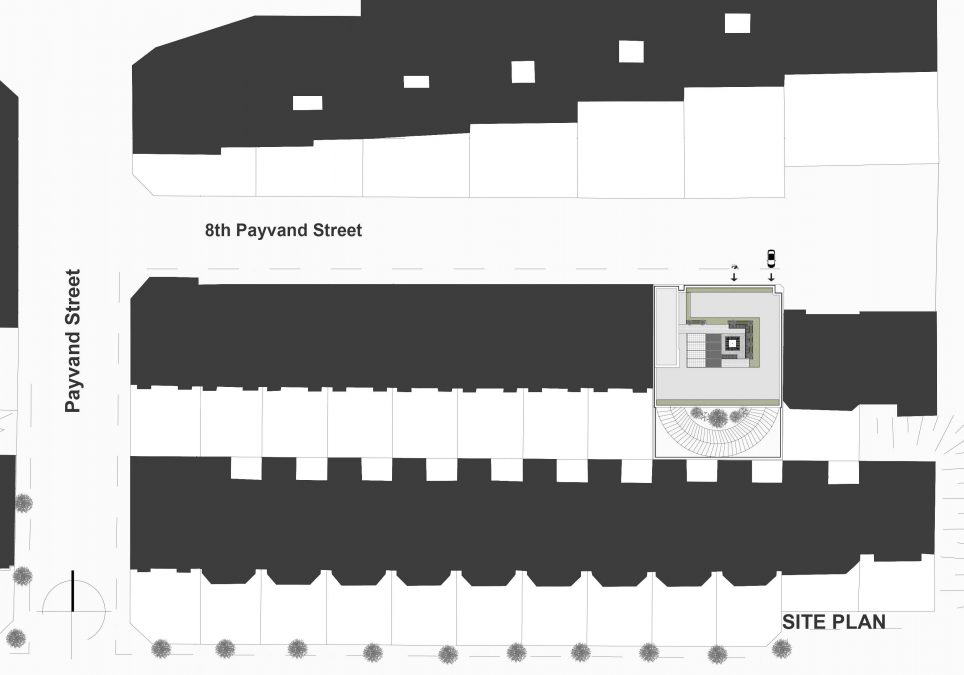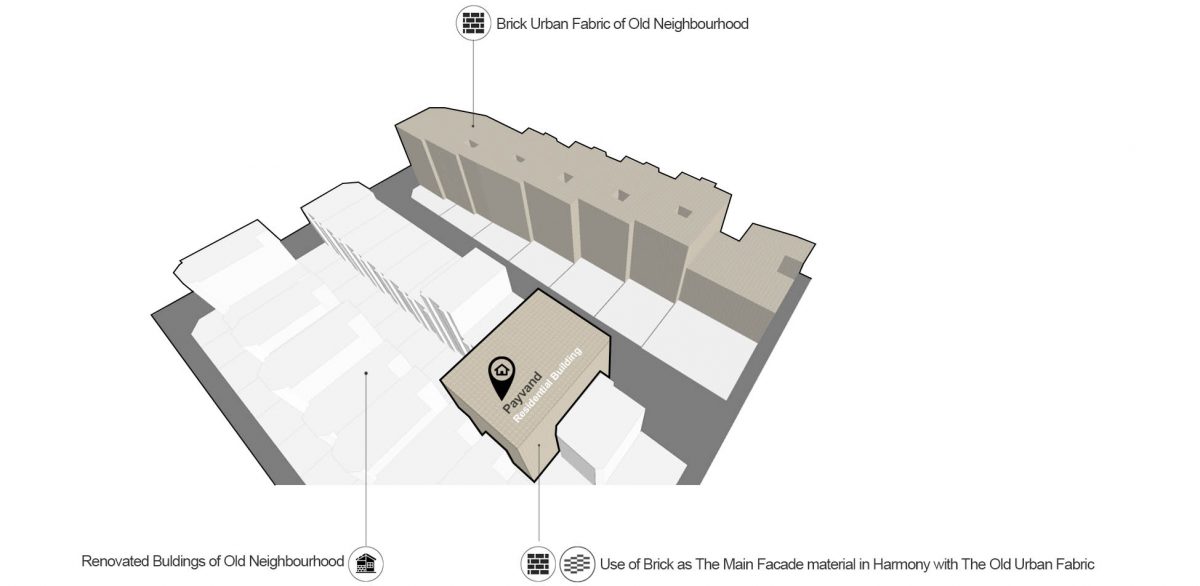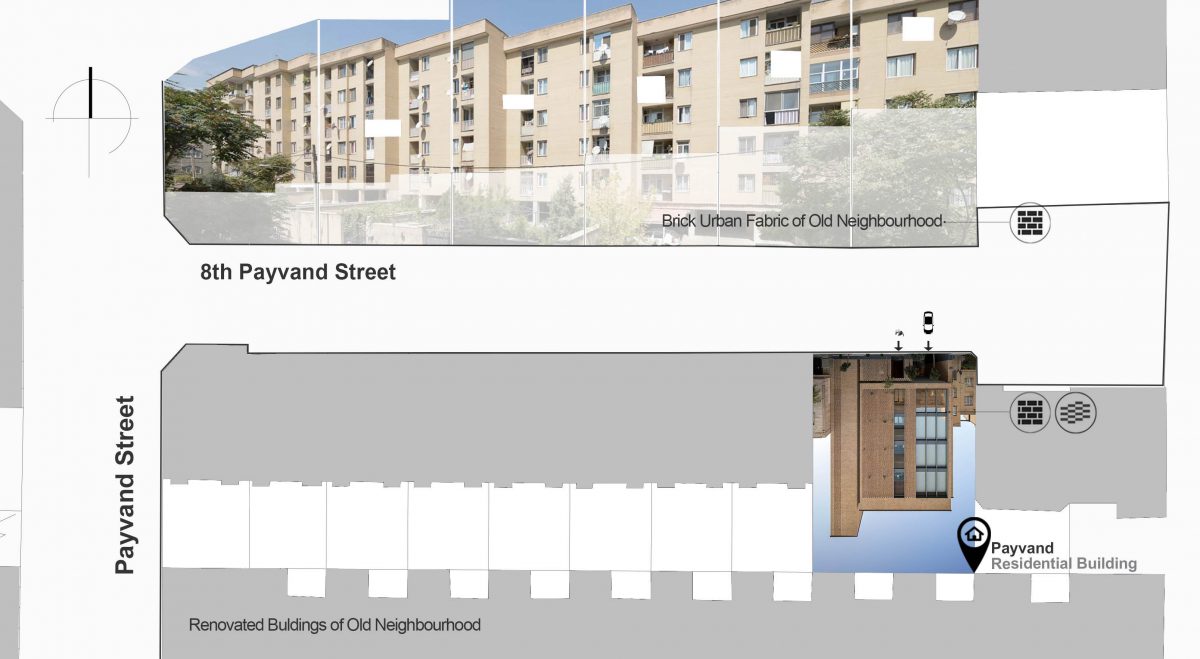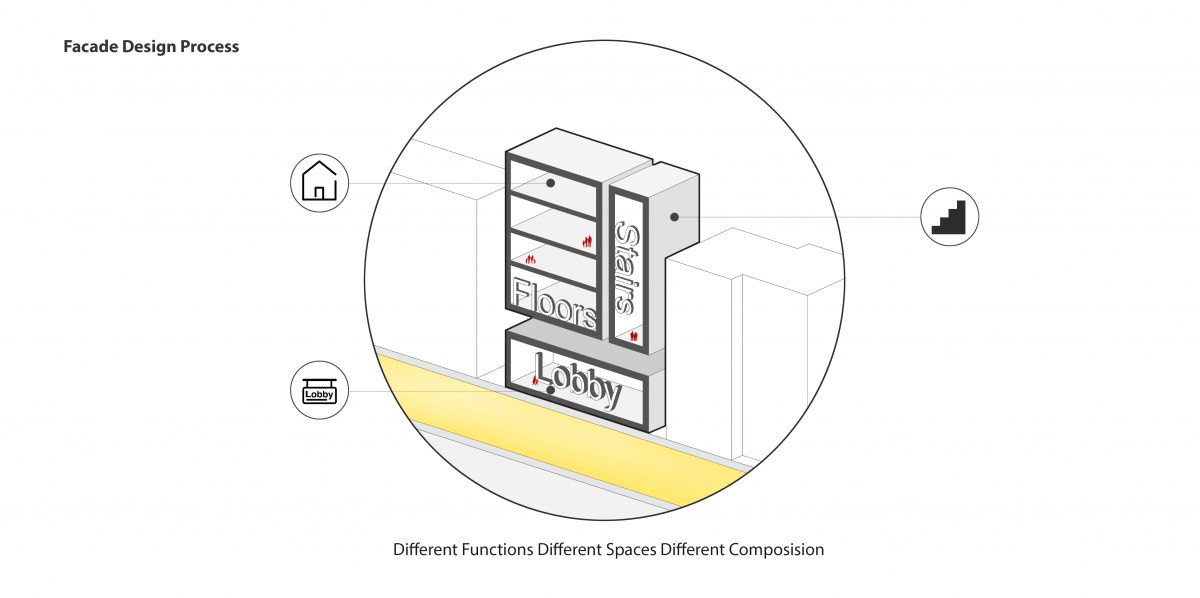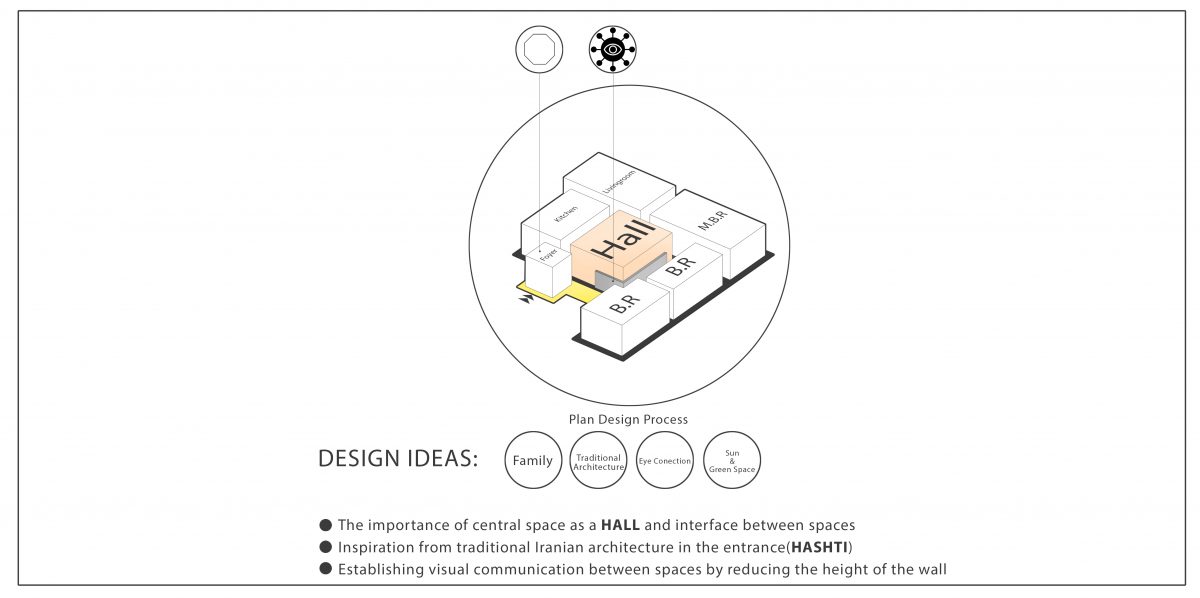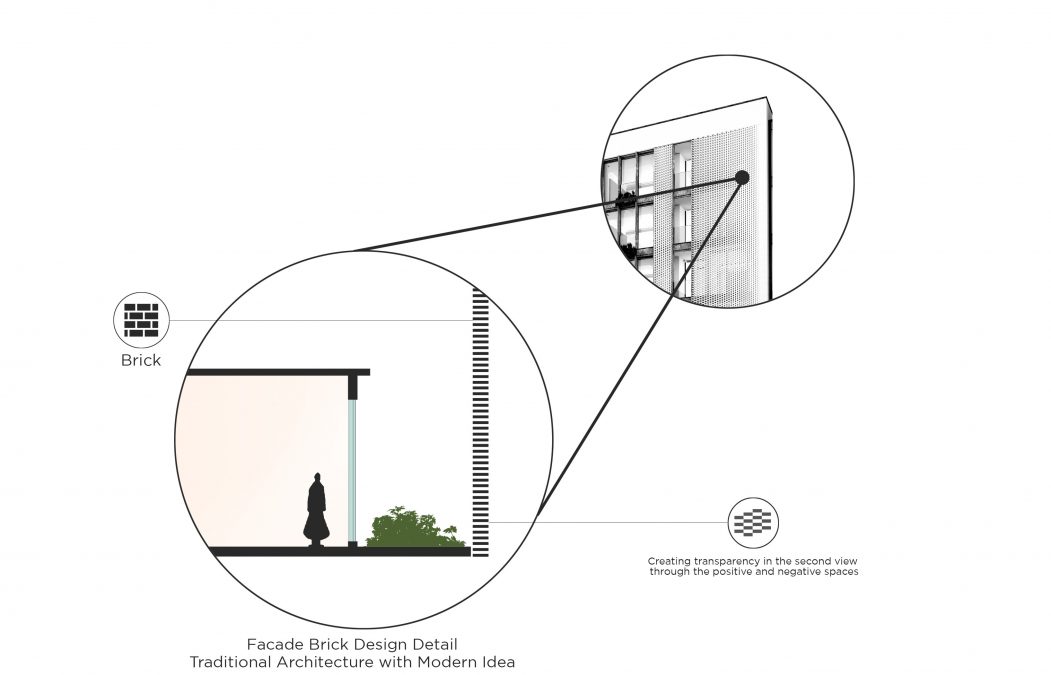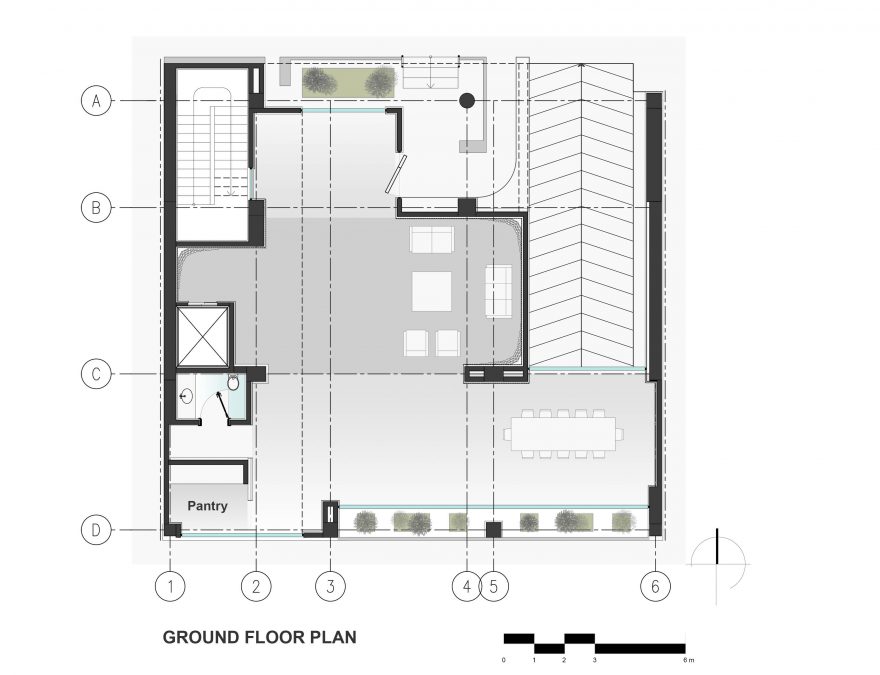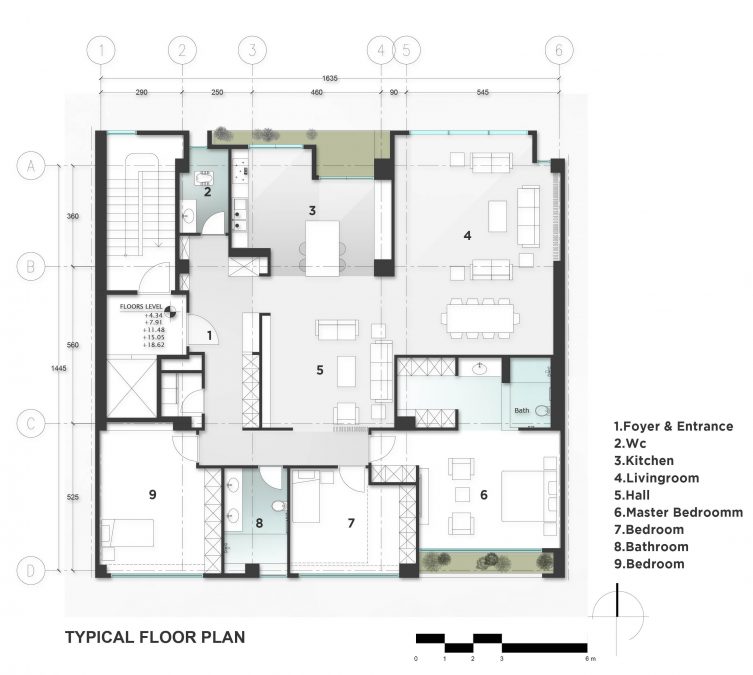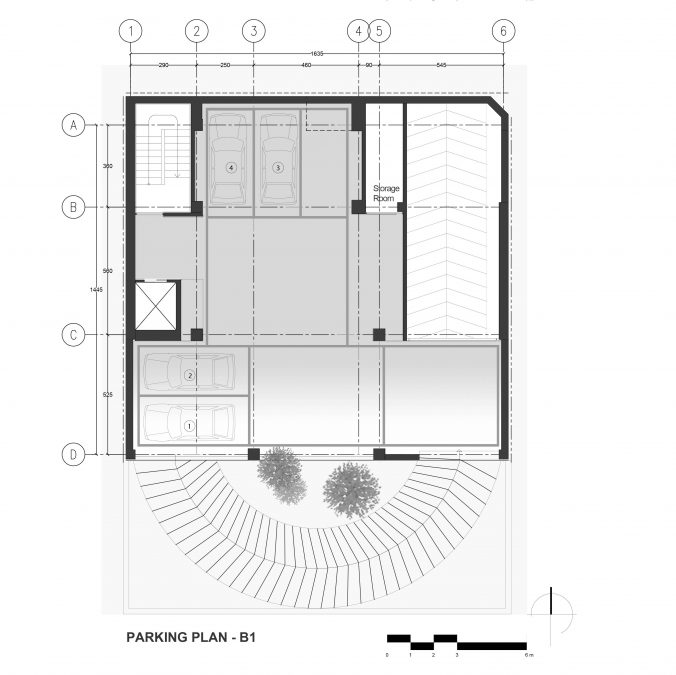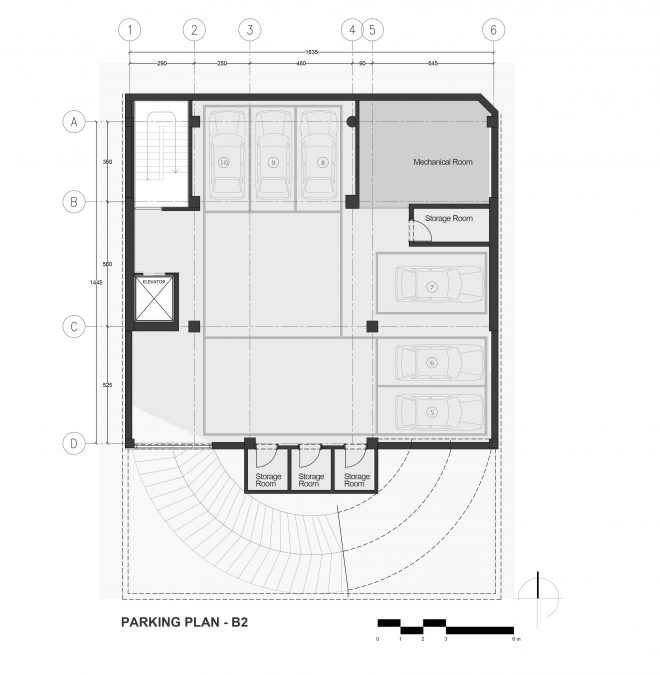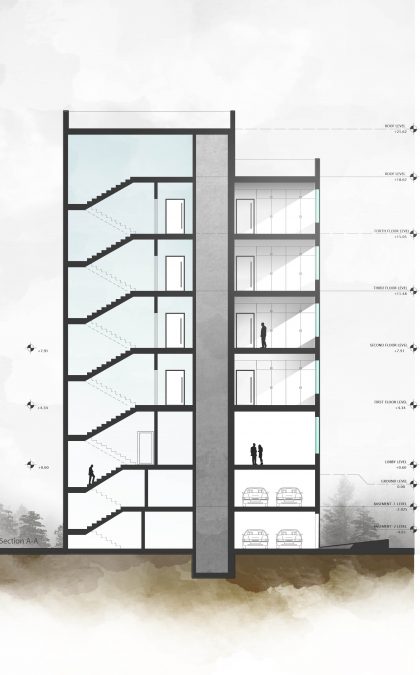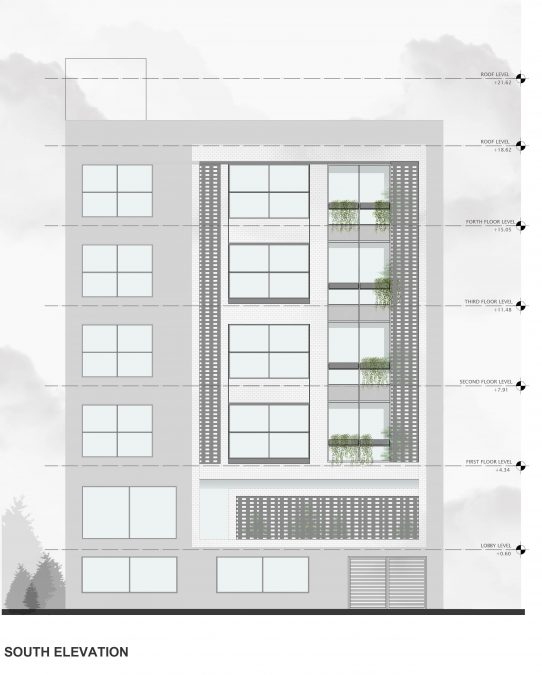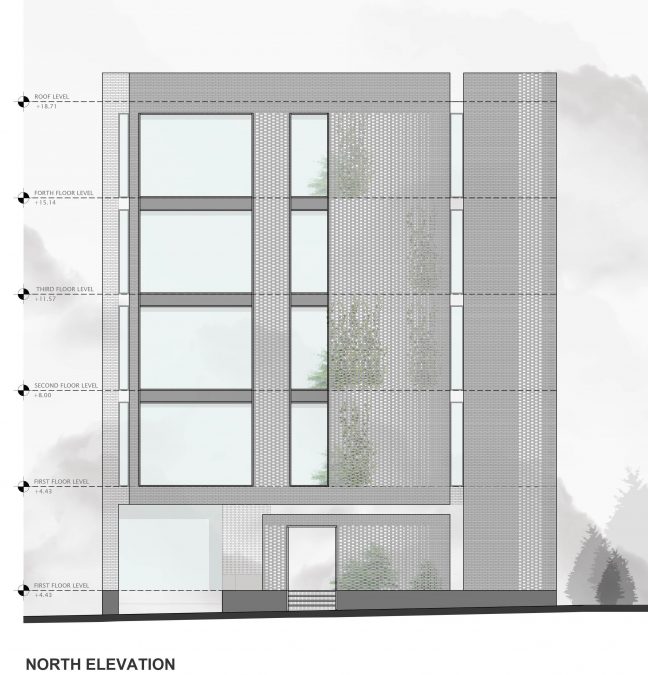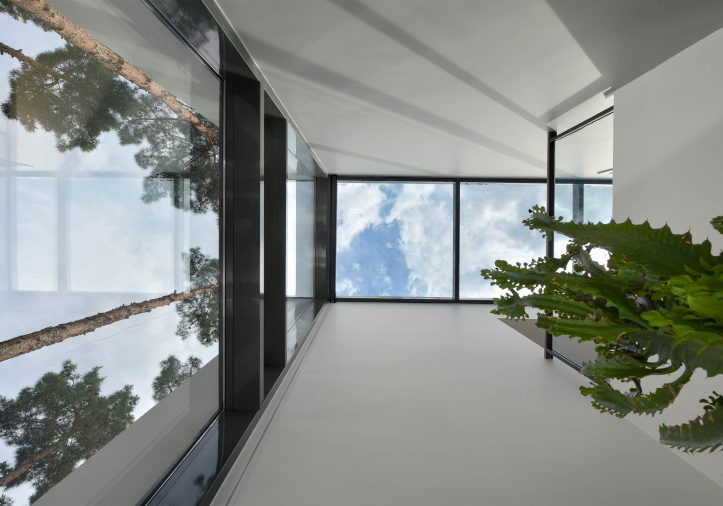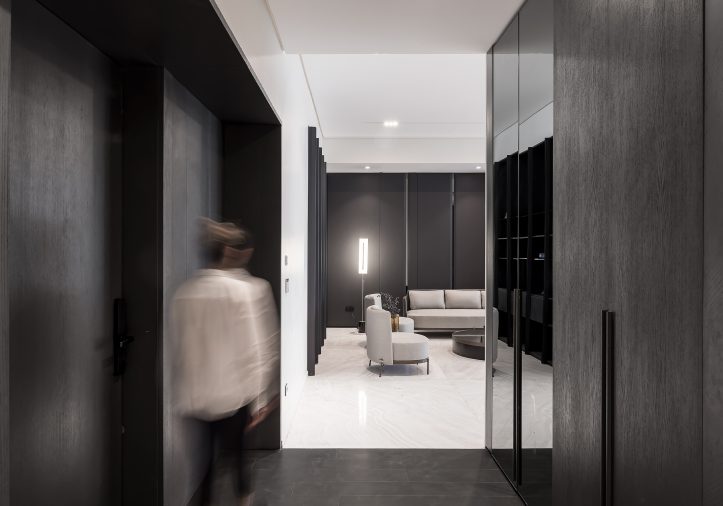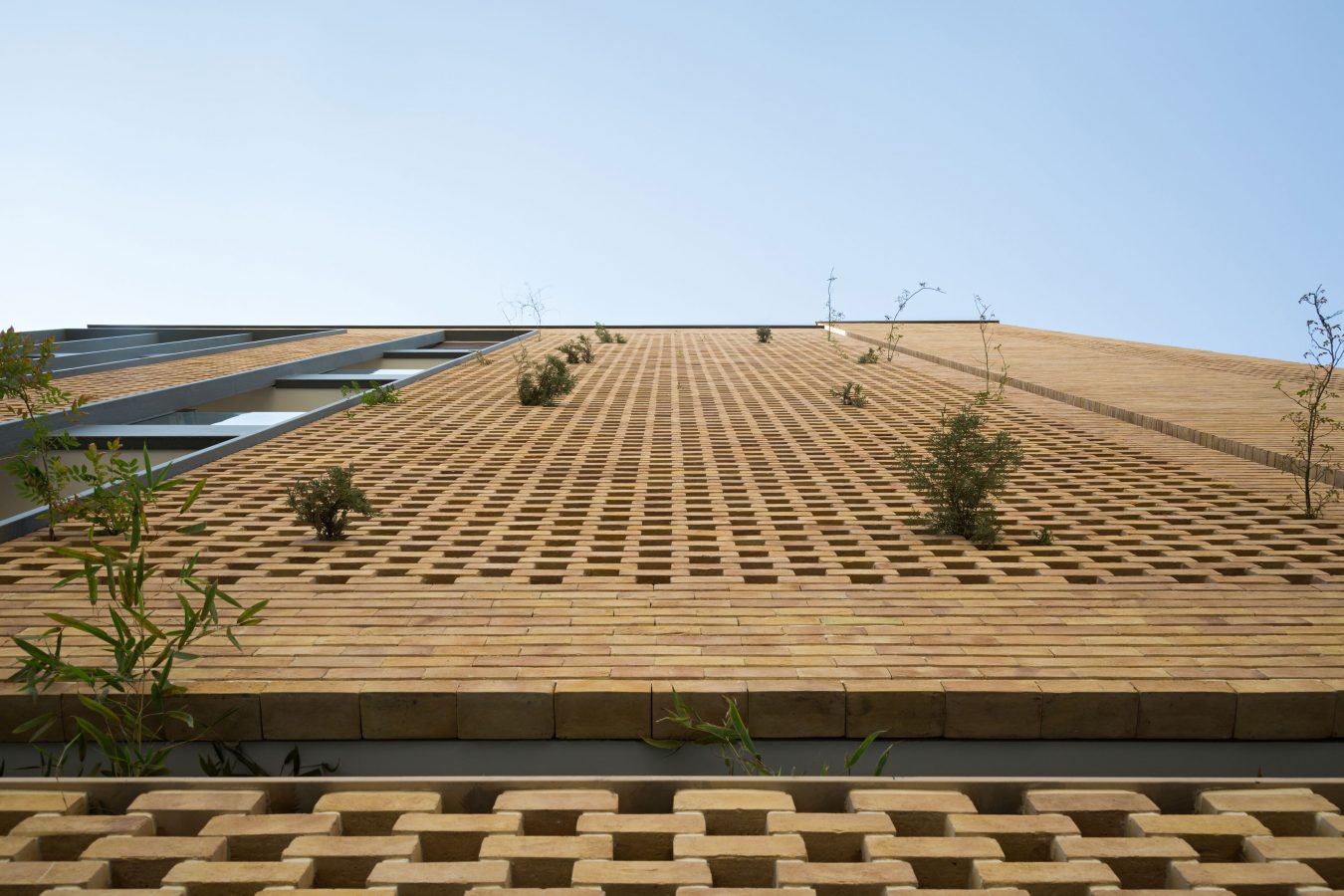
Peyvand
RolesTypeYear
Client : Mr Sepasian
Location : Saadat abad, Tehran, Iran
Function : Residential
Completed : 2020
Roles : Design & Construction
Peyvand Residential Building, located in the Mokhaberat neighborhood, 8th Payvand Alley, Saadatabad, is the new child of the Cedrus Architecture Studio, which has recently finished. The location of this project with an area of 398 square meters has several specific features such as (1) adjacency to the northern mountains of Tehran; (2) predominance of residential use and the quietness of the neighborhood; (3) enjoying proper lighting from the north and south front.
The neighborhood mainly consists of relatively short organizational houses with brick texture.
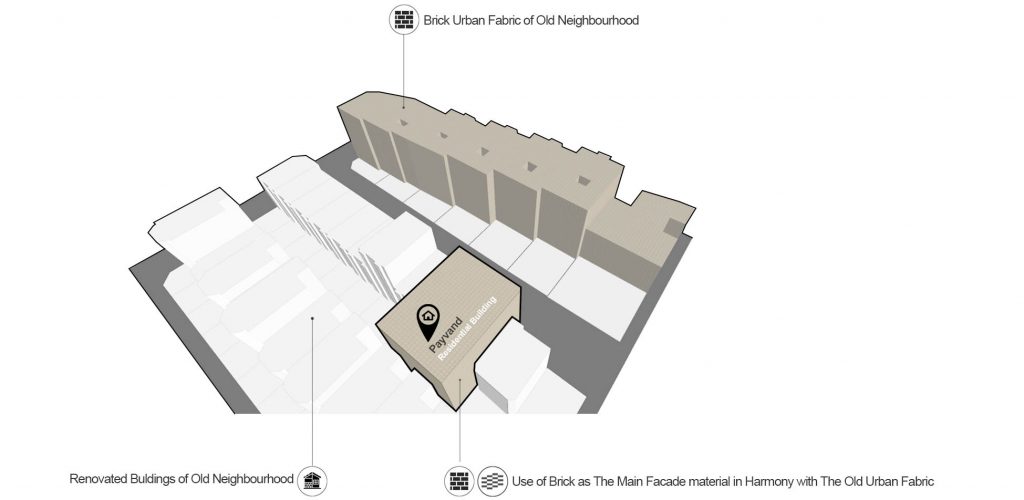
Therefore, strengthening and developing the inherent identity of the place was the first goal of the design scheme. Peyvand building itself is a modern residential building, which design to be the home of three brothers and their families. The mass/space instruction followed the same custom of occupancy ratio of 60 to 40, which in the basements, the mass could increase up to 80%. At the very first, both the client and Cedrus believed in creating an efficient building that provides an experience of architectural value to the city and its resident. Therefore, the quality found a special place in terms of both design approach determination and the use of materials. Besides, the client also considers the economics of the project. Therefore, relying on the quality aspect, accuracy, and design creativity, the building became an environmental-friendly, safe, and quiet palace, which results in residents’ satisfaction. Peyvand means bonding in Farsi. Although this name borrowed from the name of Peyvand Street, the project itself reflects the interaction of several interconnected layers: the family relations of the client, the bond of the client and designers, the link between Iranian traditional house design and today’s lifestyle, etc.
According to the project conditions and specifications, Cedrus’ ideas and solutions summarize in three categories: formal ideas, functional thoughts, and special effects of the design.
Formal and functional ideas
This project was formed and developed based on a context-oriented approach. Provided detailed solutions primarily refer to the neighborhood context. The project accurately reflects the bond between tradition and innovation furthermore results in housing units that can serve as a high-quality model for construction in the area. During the design and construction, we attempted to design the composition of the new building and its surrounding in an attractive, harmonious, humble, and at the same time innovative way.
Functionally, the building divides into four general sections: four residential units from the first to the fourth floors, a lobby and large event and party space on the ground floor, two floors of the parking lot in the basement, and a vertical connection box. Each of these four parts is slightly different in terms of character and the use of materials. The palette of materials is limited. Brick, as the major material, is one of the traditional and indigenous materials in Iranian architecture and is engraved in our historical memory. The use of bricks allows for different sculptural layouts that make up the project identity.
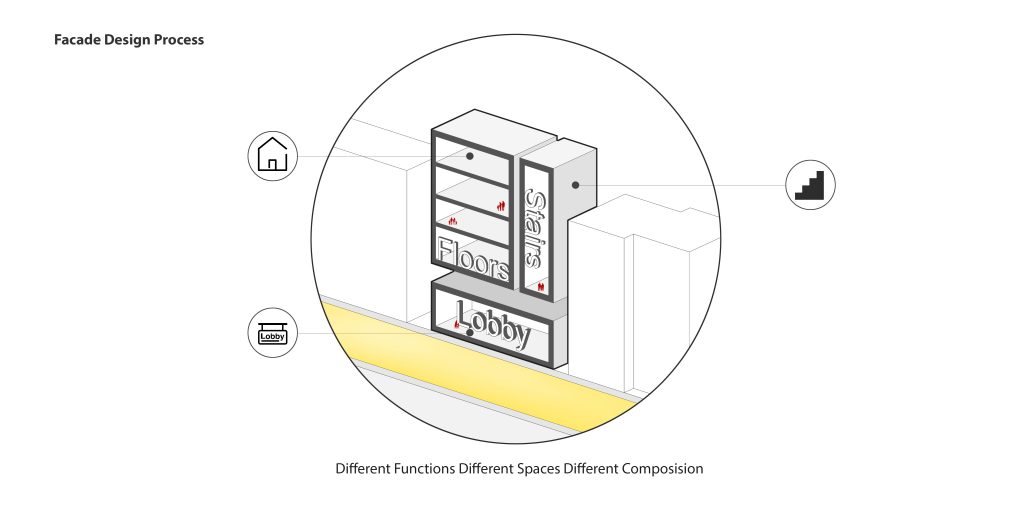
The facade of the building consists of a multi-layered brick texture with modern composition and large windows. The four-division is also evident in the facade, and the functions behind it are fully legible and clear. The stair box section is the most solid brick pattern and consists of only a narrow perforated rectangle as a curtain for the building’s stair windows. The facade at the ground floor level separated from the rest with the design of a groove-like distance. Thus, it gives the entrance a specific figure. Also, the vegetation behind the entrance brick curtain and the rusted metal sheets make an exceptional character for it. The facade of the residential floors divides into two parts; first, a semi-transparent perforated part that covers more private spaces. Second, a completely transparent crust that fills the living room with light. The windows are designed generously and extend from floor to ceiling.
Brick material has been used in a part of the stairway and residential units to realize outside-inside integration. Materials inside the units are limited, neutral, and white so as not to affect the would-be furniture arrangement of residents so much. The pale khaki brick has been chosen to have more harmony with the urban fabric and to give a sense of freshness to the building. Also, it provides a beautiful combination with the greenness of the pots behind the brick curtain. Bricks are durable and timeless that will benefit both users and the environment.
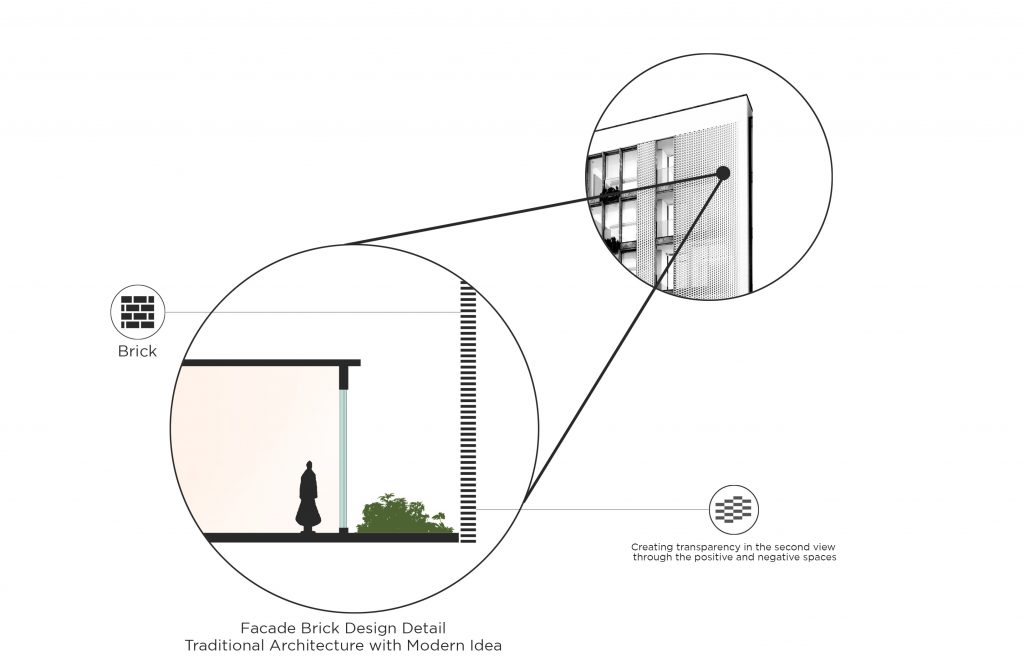
For the client, the living room and kitchen comprise the heart of the house due to their lifestyle. Thus, they demanded a direct connection between these two. Unlike many modern residential units, there is no large living room to show off. Accordingly, the interiors of each unit are tailored to the lifestyle demands of the residents and their relationships.
Four main ideas are evident in the design of the units: paying attention to family relations and designing based on them; using some elements and concepts of traditional Iranian house architecture and, linking them to the current lifestyle and regulations; possibility to use natural light and ventilation; adding greenery to the interiors as much as possible.
Consequently, the division of the interior space includes an entrance hall, a private hall, and a kitchen (as the beating heart of the house), a living room, a master bedroom, and two children’s bedrooms. There is a visual connection from the private hall to other spaces, which in some sections like the entrance or bedrooms corridor, this visual connection remains less clear. Besides, from the entrance porch, you can reach the bedrooms without entering the private living space. In general, this project gives special attention to the privacy of each family members, so that all residents have their privacy while interacting and accompanying.
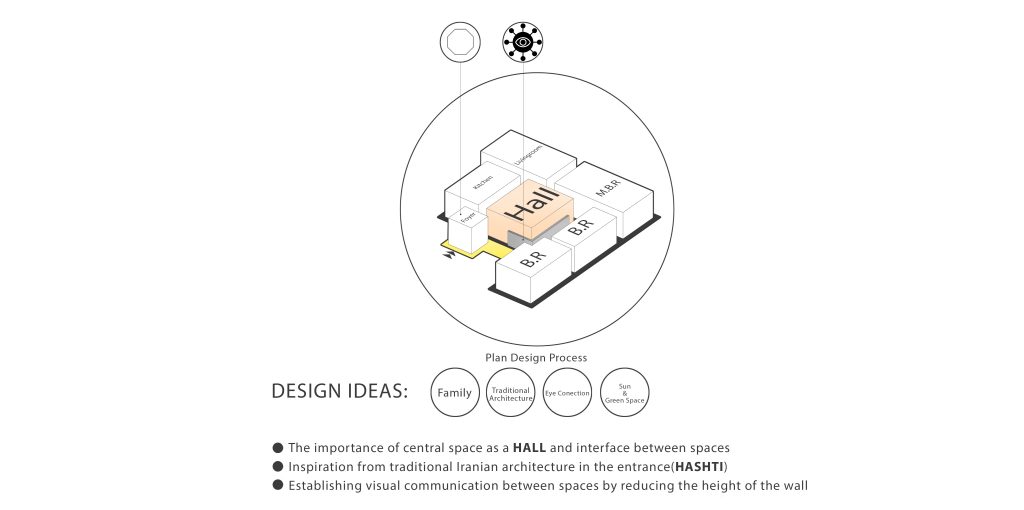
Special Effects
The special effects of Peyvand building design can be summarized as follows:
- Defining the relations of family members and translating it into architectural spaces in maximum harmony with the needs of the client and architectural standards.
- The least ostentation in combination with the surrounding urban fabric.
- Protecting the privacy of residents at different levels.
- Economic design: There was no pressure from the client on the designer to use certain materials or styles of architecture. Therefore, in line with the economic goals of the project, the native materials of the highest quality have been used, which along with accurate detail design creates a perfect residence.
